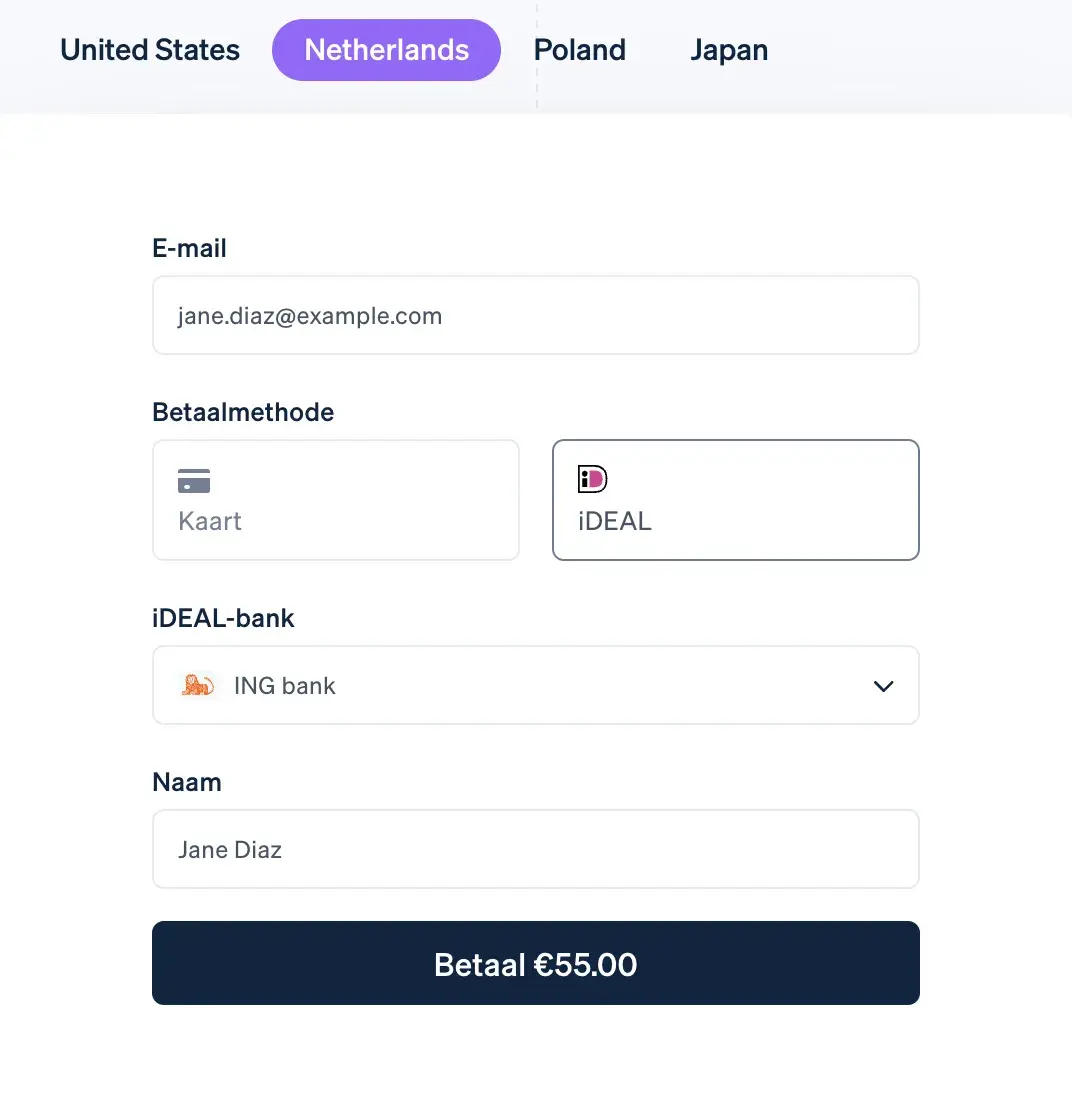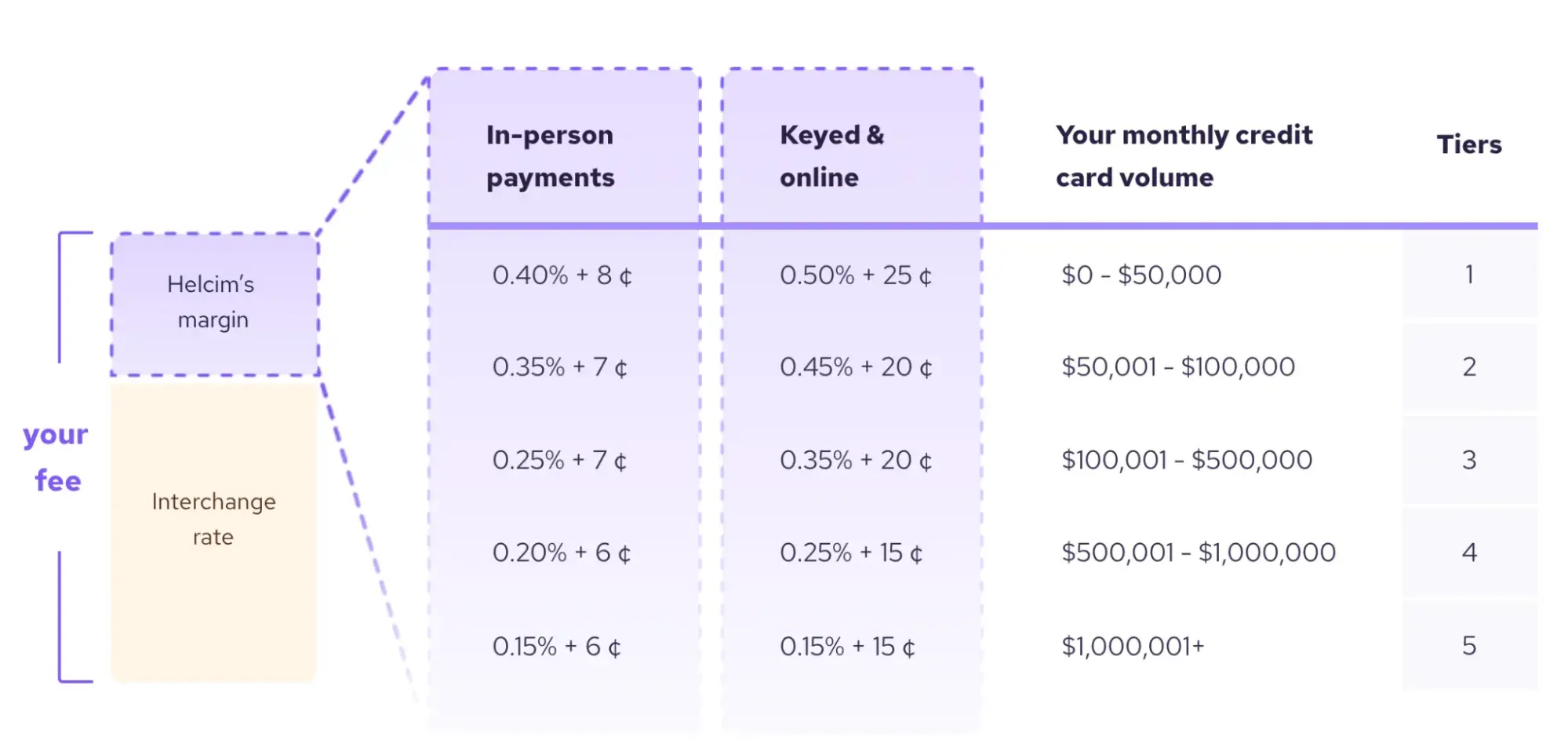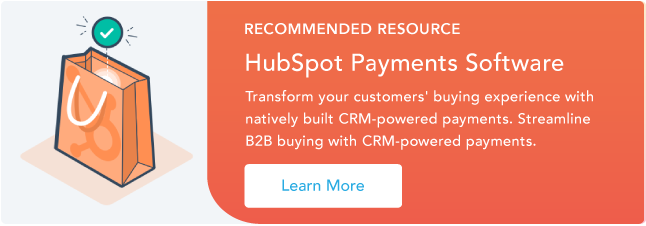With the rise of ecommerce sales comes an increase in the use of digital payments and mobile wallets. As a result, more payment processing companies and gateways have emerged. These processors make it easy for businesses of all sizes to accept payments from customers globally and in person, making them a critical component for anyone who sells goods or services.
I was curious about what exactly goes into payment processing and how these companies play a role, so I did a deep dive — here’s what I learned.
Table of Contents:
- What is Payment Processing?
- Why is Payment Processing Important?
- How Does Payment Processing Work?
- 5 Payment Processing Companies
Why is Payment Processing Important?
Without payment processing, most businesses wouldn’t be able to function (the exception being cash-only businesses, which are rare these days!). According to Statista, credit cards were the most common form of payment made at POS systems in the U.S. in 2023, followed by debit cards. What’s interesting to note is that mobile wallet payments surpassed cash as the third most common form of POS system payments, and they’re predicted to overcome debit card payments by 2027.
As the way customers pay continues to evolve with technology, payment processing platforms will be more essential for businesses.
Payment processors enable companies to accept a range of payment types, which not only creates a better customer experience but also helps maintain the business's cash flow. Plus, having a reliable payment processor keeps your payment process efficient and seamless, so you don’t have to worry about payment issues for either you or your customers.

How Does Payment Processing Work?
To explain how payment processing works, I’m going to use a fictional business as an example. Let’s call this business Sam’s Book Shop. Sam’s Book Shop is a local brick-and-mortar store based in Austin that also sells goods online. Here’s a step-by-step explanation of how payment processing works for this retail and ecommerce business.
1. Customer initiates payment.
A customer comes into the physical store and decides to purchase a few books. They initiate payment by using their credit card, debit card, or even mobile payment (e.g., Apple Pay or Google Pay) at the checkout.
This can also happen online. If a customer makes a purchase on Sam’s Book Shop’s online shop, they initiate payment by entering their payment information — either credit or debit card numbers or online payment information — on the checkout page.
2. Data is encrypted and transmitted.
Next, the bookstore’s payment processor takes the customer’s information and encrypts it so it can securely send it to the customer’s bank, which is the issuing bank.
Security is critical when you’re handling sensitive customer data, which is why businesses and payment processors must comply with payment card industry data security standards (PCI-DSS).
PCI compliance refers to a set of 12 requirements created by the PCI Security Standards Council. Basically, any business that accepts credit card payments must follow these requirements to ensure that cardholder data is securely transmitted, processed, and stored.
When you use a payment service provider (PSP), you don’t need to worry about the specifics of the compliance measures, as the provider will handle most of that. However, you still need to make sure you follow the PSP’s requirements, which are typically listed in the terms or contract, in order to remain compliant and keep your customers’ payment data secure.
3. The customer’s bank must authorize the purchase.
When the payment processor sends the purchase information to the issuing bank, that bank must approve the purchase. This step ensures that the customer has enough funds in their account to make this purchase. It also protects the customer from suspicious activity and fraud by reviewing purchases before authorizing them.
After the issuing bank authorizes the transaction, the acquiring bank (the bookstore’s bank) is notified and sends an update to the payment processor that it has been approved. If the transaction hasn’t been approved — let’s say for insufficient funds — then the customer would need to provide an alternative payment method.
4. Transaction is complete.
Once both banks have authorized everything, the transaction is complete, and the business can deliver the goods (in this case, books) to the customer. If this transaction happens online, the payment portion of this purchase is complete, and the customer should receive details on the shipment and delivery of their goods.
5 Payment Processing Companies
If you’re planning on starting a business that involves accepting payments for goods or services, then you need to use a payment processing platform to facilitate. Or, maybe you want to improve your current checkout process by expanding your payment options. Either way, I looked into five companies that businesses can use to help with payment processing and which tools are the best payment processor for small business.
1. HubSpot Payments

HubSpot offers one of the easiest ways for businesses to get started with payment processing through its payment links. HubSpot Payments enables commerce businesses to accept payments and get paid fast by creating and sharing payment links without any coding or website needed. The links can be embedded in your emails, website, online forms, or CTAs as “Pay Now” buttons or shared directly with customers.
The checkout page is simple and user-friendly, making it easy for customers to fill out and for you to get paid in just a few clicks.
What I like about HubSpot Payments is that it integrates with your CMS, which makes it easy to create a connected workflow. You can move your leads from marketing to checkout without ever leaving the platform. Plus, all of your customer data is connected, so you can better understand your transactions.
- Types of payments accepted: Credit card, debit card, ACH.
- Fees: 2.9% per transaction for credit card transactions, and 0.5% per transaction for ACH payments (capped at $10 per transaction).
- Best for: Facilitating B2B and vendor payments.
2. Square
Square is a great option for in-person businesses. Known for its POS systems, Square is a payment processor for online and offline sales.
If you have a retail store, restaurant, coffee shop, or another in-person business, Square offers several types of physical card readers that can accept all major credit cards, digital wallet payments, cash, and checks.
You can also use Square for online transactions if you have an ecommerce shop, sell services, or invoice for appointments.
When it comes to setting up Square for your business, it’s free and fairly easy to get started. In the screenshot above, I walked through the steps of setting up my payments page for my fictional business. I like that it says “Secure payment by Square” below the checkout button as that gives customers a sense of security and trust.
Square’s free plan includes a POS, online store, online checkout, invoices, and even a checking and savings account if that’s something you’re in the market for. Square also offers paid plans for restaurants, retail, and appointment-based businesses that include advanced reporting, inventory, and POS features. No matter which plan you choose, you can integrate Square with many popular tools like QuickBooks, WooCommerce, and Shippo so it seamlessly fits into your workflow.
Personally, when I see a business using Square, I feel a sense of trust. Square is an established payment processor that is easily recognizable, so it makes me feel like the business is reliable and my money will be securely processed.
- Types of payments accepted: Credit card, debit card, digital wallet, ACH.
- Fees: 2.6% + 10 cents per transaction for in-person sales, 2.9% + 30 cents per transaction for online sales, and 3.3% + 30 cents for transactions made through Square Payment Links.
- Best for: Companies that make sales in person and online.
3. PayPal
PayPal is one of the most popular payment processing companies among consumers. When asked what the biggest ecommerce payment brands are in the US, 78% of consumers said PayPal, according to data from Statista.
If you ask me, the platform’s popularity and brand recognition are reasons alone to add this payment processor to your checkout.

It’s really easy to add PayPal to your own website. If you already have an ecommerce website using a platform like Squarespace or Wix, you can connect the store to PayPal. You also have the option to build a no-code checkout if you don’t already have a website, which is a convenient option for non-technical business owners.
In the screenshot above, I created an example checkout for my fictional bookstore. You can easily customize the look and feel of the buttons, though the options are pretty limited. However, I’d say that using the PayPal colors and logo helps communicate credibility and trust, so this could be a good thing to have on your checkout page.
PayPal is easy to set up, but a potential downside is its fees. The pricing structure can be confusing since it varies greatly depending on the type of transaction and how the customer chooses to pay. For example, a standard credit card payment comes with a fixed fee and 2.99% of the transaction, while a transaction that was made through PayPal Checkout is 3.49% and has a fixed fee.

- Types of payments accepted: Credit card, debit card, digital wallet, ACH.
- Fees: Fees start at 2.29% + a fixed fee and vary depending on the payment and transaction type.
- Best for: Businesses that want payments to be accessible for the most amount of customers.
4. Stripe
Stripe is a popular payment platform built to scale with your business. The global payments tool enables businesses to accept over 100 types of payments used by customers around the world, from credit card payments to mobile wallet transactions to buy now, pay later (BNPL) options. Stripe also offers more advanced features designed to optimize every part of the transaction.

For example, if you use Stripe Checkout, it will automatically display the payment method and currency most likely to convert the customer, as shown above. According to the platform itself, some of its customers have reported seeing a 46% increase in sales after enabling local payments.
- Types of payments accepted: Credit card, debit card, digital wallet, ACH.
- Fees: 2.9% + 30 cents per transaction for domestic cards; additional fees for international cards if the card information is entered manually or if currency conversion is required.
- Best for: Enterprise-level companies with global customers.
5. Helcim
The biggest reason to choose Helcim over other payment processing companies is for its pricing. Helcim’s fees are lower than most as the company uses interchange plus pricing instead of flat rate pricing.
If you’re like me and asking yourself, “What is intercharge?” it’s the base fee that card-issuing banks and networks charge when they process a transaction. With interchange plus pricing, you pay the interchange rate plus a markup fee for using the processor.

Interchange plus pricing is considered most cost-effective for businesses, especially the more transactions you have. It’s also more transparent than other pricing structures since it provides a break down of every fee, which helps businesses identity any hidden fees or surcharges.
It’s free to use Helcim, and the average processing fees are 1.93% + 8 cents for in-person transactions and 2.49% + 25 cents for keyed and online transactions.
- Types of payments accepted: Credit card, debit card, digital wallet, ACH.
- Fees: Average processing fees are 1.93% + 8 cents for in-person transactions and 2.49% + 25 cents for keyed and online transactions. ACH payments are 0.5% + 25 cents, capped at $6 per transaction.
- Best for: Small and medium-sized businesses.
Payment Processing Makes Purchasing Seamless and Easy
After digging into payment processing and the companies that facilitate it, my biggest takeaway is that there’s so much going on behind the scenes — but you’d never know that based on how simple these payment platforms are to use.
When I’m making purchases online or in person, I don’t give payment processing any thought. I trust that the business will have a way to securely and quickly accept my payment, whether I want to use a credit card, PayPal, or Apple Pay. I believe making the payment process as seamless and easy as possible for customers is the key to success for any commerce business in 2024.
Brands that are in the business of accepting payments must choose a reliable, secure payment processing company that will handle all of the technical details and compliance requirements. The last thing you want to worry about is whether or not you’ll be able to accept payments, if you’re in compliance, or if customer transactions will go through or not.
Having a smooth payment process ensures a positive customer experience which ultimately increases loyalty and sales down the road.
Payments


.png)


![All Types of Payment Methods Business Owners Need to Know [+Data]](https://53.fs1.hubspotusercontent-na1.net/hubfs/53/typesofpayment.webp)
.webp)


![ACH API: What it is + How to Use it [+ Who Should Not]](https://53.fs1.hubspotusercontent-na1.net/hubfs/53/ach-api.jpg)
![What is ACH credit [+ Is It Safe to Use?]](https://53.fs1.hubspotusercontent-na1.net/hubfs/53/what-is-ach-credit.jpg)


